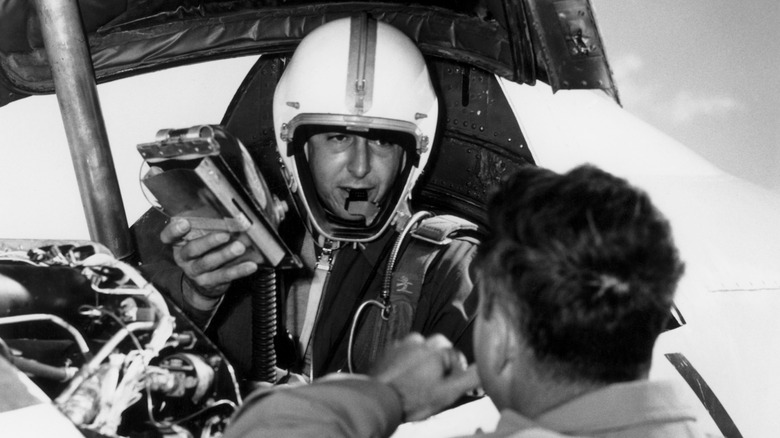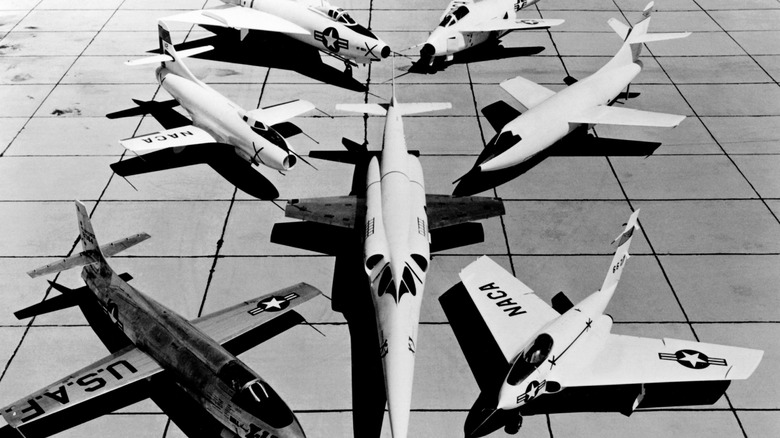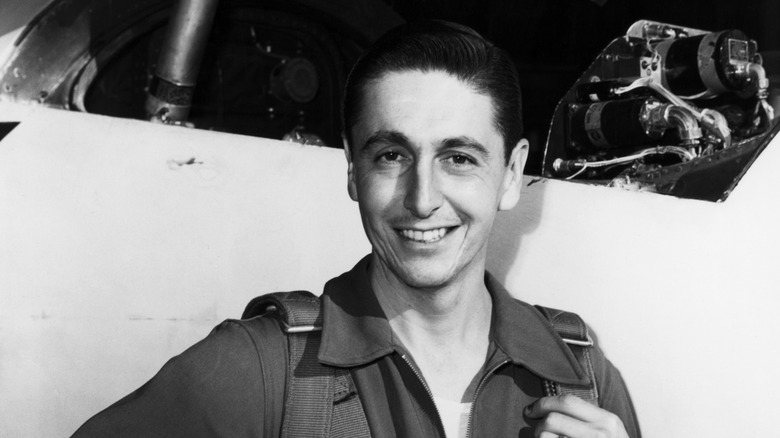NASA's Skyrocket: The First Airplane To Fly Twice The Speed Of Sound
To innovate, to press forward, is often to take risks. Iconic American pilot Chuck Yaeger broke Mach 1 in October 1947, flying the Bell X-1. In an Academy of Achievement interview years later, he said of the feat, "It's your duty to fly the airplane. If you get killed in it, you don't know anything about it anyway, so why worry about it?" Without the fearless Yaeger, there's no telling when anyone may have first broken the sound barrier. In turn, he paved the way for Mach 2, 3, and so on to be achieved.
The speed of sound was broken for the first confirmed time that day, with Yaeger officially reaching Mach 1.06. Just over six years later, in November 1953, This record was doubled as Mach 2 was achieved for the very first time.
Here's the story of Scott Crossfield's monumental achievement, and the unique NASA Skyrocket aircraft that allowed him to make it.
The development of the NASA Skyrocket
The Skyrocket was the follow-up to the D-558-I Skystreak, a NASA aircraft developed in the 1940s to provide information about supersonic flight and its potential impact on both aircraft and pilot. The Skystreak would go on to live up to its name by reaching a new world record speed and then beating its own best time in the very same month, August 1947.
The D-558-II Skyrocket was rather a complex design challenge, as it also boasted (as its name implied) a rocket engine. It was equipped to achieve speeds greater than Yaeger had, with one crucial component being the LR87 engine that was equipped to the Skyrockets in the 1950s. LR87s would go on to be used in launch vehicles and Titan II missiles.
This further reinforced the Skyrocket's purpose: To help usher in the era of flight at the kind of pace that space travel would require. After all, Earth escape velocity stands at approximately 25,031 mph. This is about Mach 32.6. Though the Skyrocket certainly didn't hit that pace, it was the very first craft to make Mach 2, double the speed of sound.
The Skyrocket's fastest, luckiest flight
Ultimately, speed records are all about what a given vehicle is able to achieve on the day in question, rather than what it's theoretically capable of. This means countless records have been narrowly missed over the years by unfavorable conditions, mechanical errors, and other misfortunes besides. In the case of the seemingly-fated Skyrocket flight of November 1953, the opposite seemed true: everything went not only correctly, but perfectly.
Scott Crossfield, who piloted the aircraft that day, would later say, according to NASA, thsy Mach 2.01 was the absolute maximum the aircraft was capable of hiting. Whether it would, could, or should reach it was up for debate prior to the flight. "Everybody on the base knew that we were going to make the try, but very few people thought that we were going to make it," he reportedly confessed, wondering whether the attempt was "just ... asking the airplane to do more than it was ever designed to do."
Luckily, though, the Skyrocket had everything from an in-air launch from an airborne Boeing B-29 to a thorough waxing (thereby reducing drag) working in its favor. It reached exactly Mach 2.05, climbing from 32,000 feet to 72,000 feet as it did so. Crossfield's feat may not be as renowned as Yeager's defining one was, but there's no denying its significance.


